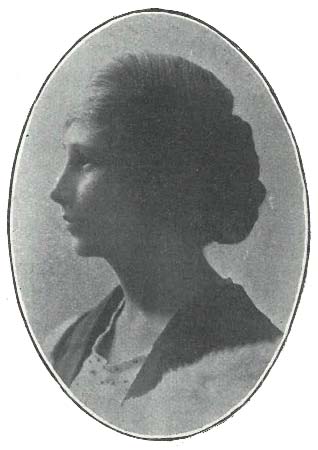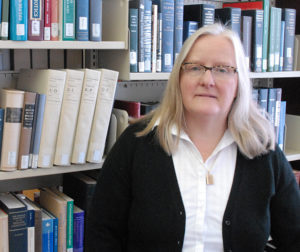Jones was also a student here when the fire of 1920 burned campus to the ground
 In 1920, Llewellyn May Jones (née Reese), graduated from King’s. She’s believed to be the first female engineer in Canada.
In 1920, Llewellyn May Jones (née Reese), graduated from King’s. She’s believed to be the first female engineer in Canada.
Jones was born in Springhill, N.S., in 1899. She was the daughter of a mining family, and her father encouraged her to pursue studies to become an engineer. After attending St. Francis Xavier University for two years, she transferred to King’s where she completed her engineering education.
Jones graduated in 1920, and was, at the time, only the second female valedictorian in King’s history. Her valedictory address referenced the tumultuous period they had all just lived through:
“…[the] Class ’20 made its advent in College under the dark cloud of war in the autumn of ’16. In the second year its number began to diminish. Some answered the call of duty, other members have gone to other professions and other universities, and now the original class is almost without representation.
During the last four years King’s has undoubtedly passed through the most difficult period in her History. To Dr. Boyle, our esteemed President…we owe a debt of gratitude for guiding us safely amid the most disheartening conditions.

She was proud of her accomplishments
King’s Librarian Patricia Chalmers, BA(Hons)’80, had the opportunity to tour Jones around King’s during Jones’s 1979 campus visit.
Llewellyn May Jones received her degree from the University of Calgary in November 1978. The following summer she came back to Nova Scotia for a visit, and in early June 1979 she came to King’s, her alma mater. I was an undergraduate working as a student Library Assistant that summer. Dr. John Godfrey, the President, met with her, and then brought her upstairs to the Library, where she presented the Librarian, Mrs. Mary (Hunt) Lane, BA’38, with a copy of her M.A. thesis, “The Search for the Hydrocarbons: Petroleum and Natural Gas in Western Canada, 1883-1947.”
I was asked to show Mrs. Jones around the College buildings. She was a slight, but confident and energetic presence, and maintained a lively flow of conversation while we went up and down the stairs. I have always been interested in the history of King’s, and tried to prompt her to reminisce about her undergraduate days, but she preferred to tell me about her research into the energy industry in Alberta. She was proud of her accomplishments. Mrs. Jones told me that many people thought that she must have made a fortune with all her inside knowledge of the industry, at a time when people were staking claims and striking oil. They assumed that she would have made investments based on information gained when she worked for the Petroleum and Natural Gas Conservation Board in the 1940s. She was quite disdainful of this attitude, as she would have considered it a violation of a public trust, to profit personally from a privileged position.
With peace came great hope for King’s, and last autumn we welcome many of our old students returning from France. How gratifying it was to know that every available room in the College was taken…”
Jones also referenced the great fire of Feb. 5, 1920 that burned the original King’s campus in Windsor, N.S. to the ground in her final year, and again displayed her pluckiness by writing of the campaign to fundraise $600,000 to rebuild King’s, “…may King’s continue to win fame and glory in the future as she has in the past!”
A forked career path
After graduating in 1920, Jones moved to Alberta. In a later interview when she reflected back on this time, she said when applying to jobs related to her field, she came to realize employers “only wanted a Girl Friday.” Not interested in taking such a role, she returned to school, earning an education degree and going on to teach high school sciences. She was by then married to Sid Jones, another King’s alumnus.
During the Second World War, Jones finally had the opportunity to work in engineering, taking up a position as Assistant to the Chief Geologist for the provincial engineering board. She left once the war ended so that the returning servicemen could take the job. In her later years, she worked as a teacher and philanthropist in positions with the University Women’s Club in Alberta, and sat on symphony music boards.
She visited King’s during a return to Springhill in the 1970s, where King’s Librarian Patricia Chalmers, BA(Hons)’80, had the opportunity to meet her. (see sidebar)
Then in 1978, at the age of 79, Jones received an MA from the University of Calgary. Her thesis explored the history of the oil and gas industry of Alberta until 1947. She spent her final years working to develop exhibits of that history for museums in Ottawa. Jones died in 1986.
Llewellyn May Jones is like many of our past alumni trailblazers: ready and willing to help and make strides for others, tireless in her interests. Her achievements have been obscured by the lack of history in the field of engineering, but in the 70s she herself said that if she were not the first female engineer, she was certainly among the first several. King’s own history of scientific and engineering education is often indistinct from that of Dalhousie’s, but it’s important to remember that our interdisciplinary model of education which includes studying scientific texts in the Foundation Year Program, and includes an upper years honours program in a the History of Science and Technology, is born of its legacy.
With the centennial anniversary of King’s fire happening this year, it does us well to remember the lasting impact that alumni from that era have had on King’s and society. Llewellyn May Jones, a trailblazing pioneer, serves as an example to alumni and current students that the work done at this university has lasting impact. Sometimes, though, it takes a bit of uncovering to rediscover these stories. But King’s students not only know how to find them, but how to make history themselves.

